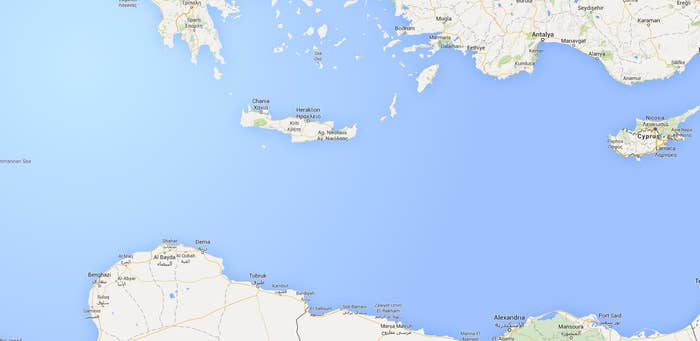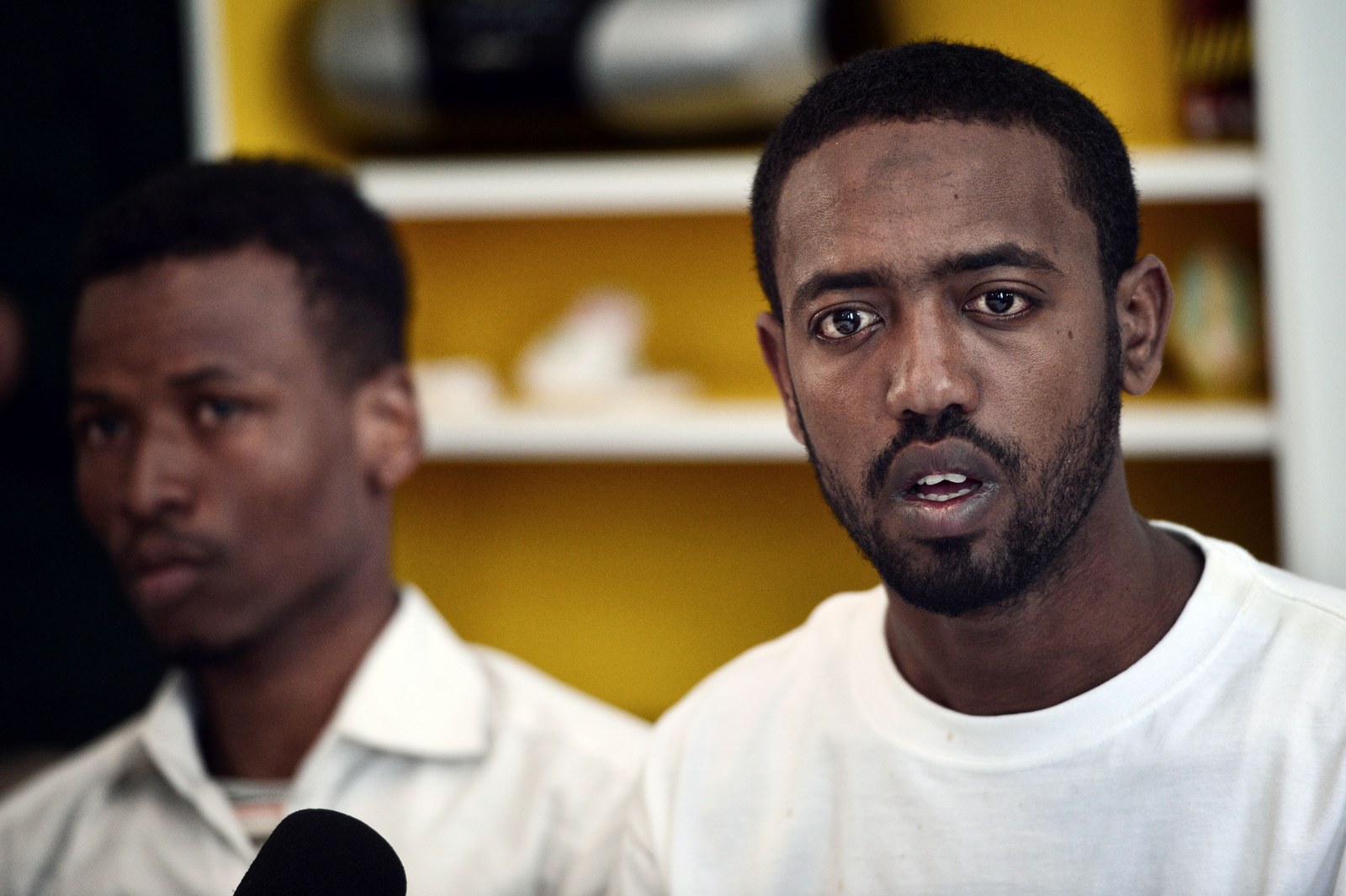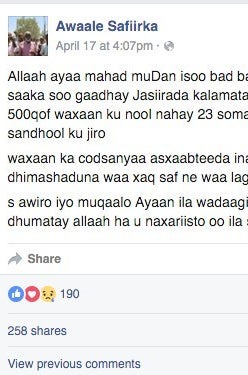
Survivors' accounts of a shipwreck off the coast of Greece last week confirm that a boat carrying refugees capsized and as many as 500 people drowned, making it one of the biggest tragedies involving refugees this year, a United Nations spokesperson told BuzzFeed News.
Thirty-seven men, three women, and one 3-year-old child were rescued from the Mediterranean Sea by a Filipino cargo ship on April 16.
However, confusing and conflicting details have emerged surrounding the sinking of the boat, which was carrying mainly non–Arabic-speaking refugees.
In an interview with BuzzFeed News, Katerina Kitidi, the U.N. spokesperson, said they believe not all of the refugees departed from Libya. Instead, on April 7 as many as 300 may have departed from an Egyptian port for Italy. However, a spokesperson for the International Organization for Migration (IOM) who also spoke with the survivors said that "none of them know the exact name of the port."
Egypt's government has said that it is not aware of any boats having left the Egyptian coast. "We have no knowledge of the boat, and you should take all your further questions to the army," Ahmed Abu Zaied, senior spokesperson at Egypt's foreign ministry, told BuzzFeed News.
U.N. officials said a second vessel had departed from a port in Tobruk, Libya, carrying 200 refugees. However, there are conflicting reports on how many boats left the Libyan port city — one report cites a single 30-foot boat, with 100 to 200 people aboard, while another says roughly 200 people traveled in up to four vessels, carrying 40 people apiece.

But a spokesman for Libya's coast guard, Ayoub Jassem, told the Associated Press he had no knowledge of the refugees or any of the boats that may have left from Tobruk.
Of the 41 survivors who were interviewed in Athens, all confirmed that on or around April 12, somewhere off the coast of Libya, smugglers attempted to transfer the refugees from the smaller boats to a larger one. U.N. officials said that majority of those who survived did not speak Arabic, so details about the smugglers were unclear.
"I saw my wife and my two-month-old child die at sea, together with my brother-in-law,” one of the survivors, Mohamed, from Ethiopia, told the IOM. “The boat was going down...down...all the people died in a matter of minutes."

The IOM believes of the refugees who survived, 30 of them were already onboard the smaller boats and just 11 managed to escape the larger boat and make it to relative safety. After three days of drifting, the group realized one of the smugglers had thrown a cell phone, with a preprogrammed number, into the smaller boat.
On April 16, the refugees managed to make contact with authorities in Rome, the U.N. High Commissioner for Refugees (UNHCR) said, who then contacted the Greek coastguard, launching an operation.
A spokesperson for the Greek coastguard told BuzzFeed News they received information about refugees on a "wooden boat" off the southwest coast of Greece on April 16. They redirected Philippines-registered cargo ship the Eastern Confidence, which picked up the refugees and brought them to the Greek port of Kalamatas the following day.
The coastguard also confirmed that officers are "collecting information" about the incident from the survivors, but emphasized this was standard procedure for such an event, and did not mean there would be a formal investigation into the deaths.
The refugees stayed in Kalamatas until April 20, after which they were transferred to Athens after media interest in the story rapidly intensified.
What triggered so much interest in the first place?
On April 17, Awaale Safiirka posted an account of the tragedy on Facebook, describing how only 23 people out of 500 had survived after the boat sank. Although his last listed address on Facebook is Cairo, his posts have been written consistently in Somali.


In the days following the sinking, hundreds of people, mostly from Somalia, shared and commented on his posts.
BBC Arabic published the first story, originally citing a Somali ambassador in Egypt. It suggested that a boat carrying 500 people had capsized and sunk off the Egyptian, not Libyan, coast. Further reporting from BBC Somalia quoted a Somali woman who lived in Cairo, who claimed she had lost three relatives in the disaster.
Another survivor, Awaale Warsam Sandhool, gave an interview to a Somali newspaper on April 18, in which he said he had set off from Egypt and wanted to go to Italy. Sandhool said 24 survivors were taken to the Greek island of Karpathos, not Kalamatas. However, U.N. officials told the Migrant Report that inquiries about refugees on the island had turned up a complete blank. According to a UN official, none of refugees from this incident were taken to Karpathos island. As far as they were aware, all 41 were transported directly to Kalamatos following the rescue.
The same day, a Somali government spokesperson tweeted to express "heartfelt condolences" to all affected by the tragedy.
Please note we don't have a confirm number yet. Check back for updates. It's hard time for the families and friends of the deceased. AUN.
But a spokesperson for Frontex, the agency that manages the European Union's borders, told BuzzFeed News it "didn't know much" about the incident or "if it happened at all." The Italian navy also said they were unaware of any such incident. "We don't have any details about it and I can confirm that our ships are not involved," they told BuzzFeed News on April 18.
Meanwhile, Somali newspapers had begun widely reporting the news about the capsizing. Hussein Mohammad, a freelance journalist based in the Somalian capital, Mogadishu, told BuzzFeed News the number of those reported dead was placed at around 200, contradicting reports that 500 people had died.
Aato Abdisalam, the spokesperson for Somali government, told BuzzFeed News he was unable to confirm the number of people who died, but said the government believed that a significant number of Somali youth were among the dead.
On April 20, both UNHCR and IOM published their report based on their interviews with the survivors, but neither organization confirmed the tragedy.
Kitidi, the UNHCR spokesperson, said the agency had spoken to all 41 survivors.
"You have people who are traumatized, who in the middle of the night survived through very difficult situations," she told BuzzFeed News. "They might not be able to tell the same story [exactly], even if they are on the same boat.
"We do believe that there is no reason to doubt them."
